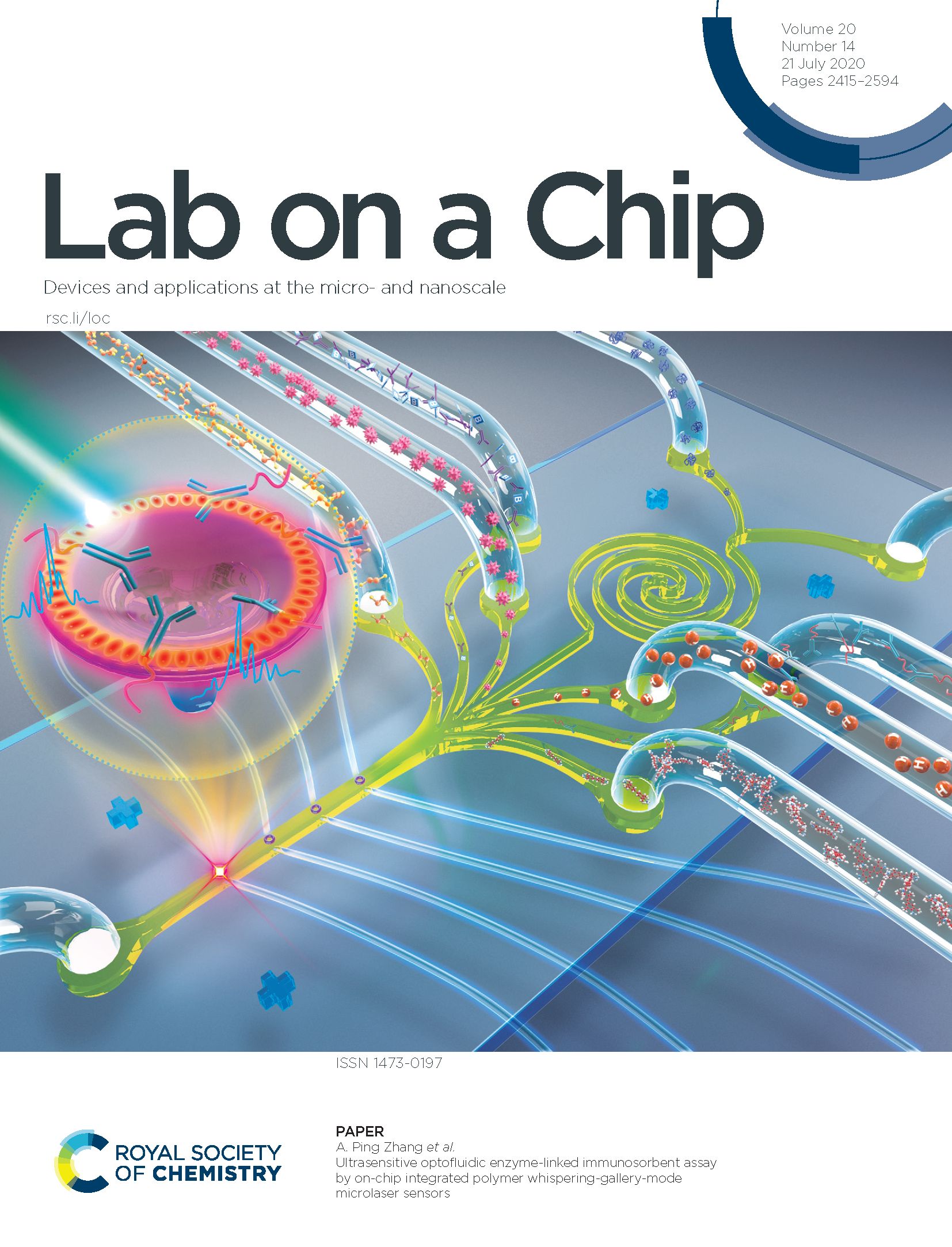
Title: Ultrasensitive optofluidic enzyme-linked immunosorbent assay by on-chip integrated polymer whispering-gallery-mode microlaser sensors
Abstract: Optical whispering-gallery-mode (WGM) microcavities offer great promise in ultrasensitive biosensors because of their unique ability to enable resonant recirculation of light to achieve strong light–matter interactions in microscale volumes. However, it remains a challenge to develop cost-effective, high-performance WGM microcavity-based biosensing devices for practical disease diagnosis applications. In this paper, we present an optofluidic chip that is integrated with directly-printed, high-quality-factor (Q) polymer WGM microlaser sensors for ultrasensitive enzyme-linked immunosorbent assay (ELISA). Optical 3D μ-printing technology based on maskless ultraviolet lithography is developed to rapidly fabricate high-Q suspended-disk WGM microcavities. After deposition with a thin layer of optical gain material, low-threshold WGM microlasers are fabricated and then integrated together with optical fibres upon a microfluidic chip to achieve an optofluidic device. With flexible microfluidic technology, on-chip, integrated, WGM microlasers are further modified in situ with biomolecules on surface for highly selective biomarker detection. It is demonstrated that such an optofluidic biochip can measure horseradish peroxidase (HRP)–streptavidin, which is a widely used catalytic molecule in ELISA, via chromogenic reaction at the concentration level of 0.3 ng mL−1. Moreover, it enables on-chip optofluidic ELISA of the disease biomarker vascular endothelial growth factor (VEGF) at the extremely low concentration level of 17.8 fg mL−1, which is over 2 orders of magnitude better than the ability of current commercial ELISA kits.